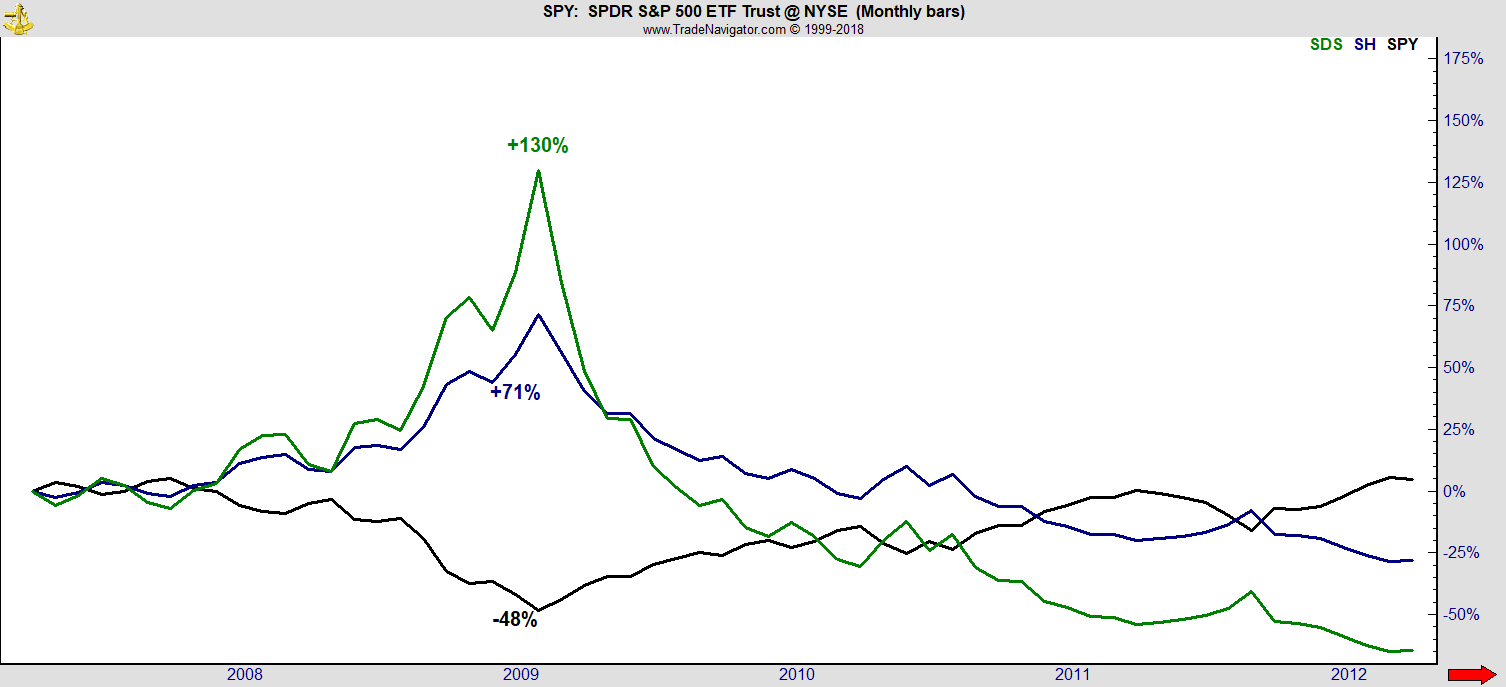It’s time to consider the unthinkable.
We need to think about what to do in a bear market.
A few years ago, it seemed stock prices were always going up. But, that’s not true in the long term.
Bear markets are common. They are also devastating. Twice in the past 20 years, the S&P 500 Index dropped more than 50%. It takes years to recover from losses like that.
Large losses could delay retirement plans. They could affect education plans. Large losses can be life-changing.
The worst news is large losses could happen again. Possibly very soon.
There is some good news. This bear market differs from bear markets of the past.
Today, investors have tools for bear markets that will enable you to actually rake in profits in a sharp market downturn.
Unlocking the Secrets of the Inverse ETF
It was always possible to hold cash. But that meant paying taxes and missing out on rallies. Now, investors can own inverse exchange-traded funds (ETFs) or buy put options.
Inverse ETFs are designed to increase in value when the index they track goes down. By moving inversely to the index, these funds lose money when the index rises. They meet that goal rather well.
But as the chart below shows, they don’t precisely track the index on the downside. In 2008, inverse funds overperformed. They might underperform next time.

This chart shows the performance of SPDR S&P 500 ETF (NYSE: SPY) as the black line, ProShares Short S&P500 (NYSE: SH) as the blue line and ProShares UltraShort S&P500 (NYSE: SDS) as the green line.
As a short ETF, SH should move as much as SPY in percentage terms but in the opposite direction. An UltraShort fund such as SDS should move twice as much as SPY in percentage terms but in the opposite direction.
All ETFs are rebalanced daily. That means they track the performance of the index for one day. Over two days or more, the relationship between the ETFs varies.
When stocks bottomed in 2009, SH delivered a gain of 71% when the index fell 48%. That was better than investors hoped.
SDS gained over 170% more than the index declined. That was also better than hoped.
The differences develop from the way day-to-day changes in the index unfold. It’s possible the index could decline, and the inverse funds could lose money if the sequence is just right.
Another problem with inverse funds is how quickly losses mount after the bear market ends. All the gains in SDS were gone within five months of the bottom. Gains in SH were gone within a year of the bottom.
Because the gains in inverse funds depend on the specific path of the bear market, investors must take profits quickly. They aren’t the best choice for many investors who will want proof the bottom formed.
Reduce Risk and Increase Gains
If inverse ETFs don’t fit your trading style, there is another investment vehicle for you to consider.
Put options could be the best bear market investment.
Put options give the buyer the right to sell 100 shares of an ETF at a certain price before a specified time. They generally cost about 2% to 3% the price of the ETF. This means they can deliver large gains when markets make small moves.
For example, the S&P 500 Index suffered a 3% drop on Tuesday, shaking up traders. But the December 7 $279 put on that ETF gained 411%.
If your portfolio is still heavily invested in stocks, this option would have helped to offset some of your losses. And if you’ve moved mostly to cash, this put would have earned you a nice profit while traders sold in a panic. What’s more, the most you could potentially lose on the put option is just the price you paid to enter the position, or $176 in this case.
Options are short-term trading tools. That means investors must take profits from time to time in a bear market. It also means they can open new trades at a low cost. That keeps risks small.
This all means investors shouldn’t fear bear markets. They can protect their portfolios. They may also enjoy gains at times.
Regards,

Michael Carr, CMT
Editor, Peak Velocity Trader










